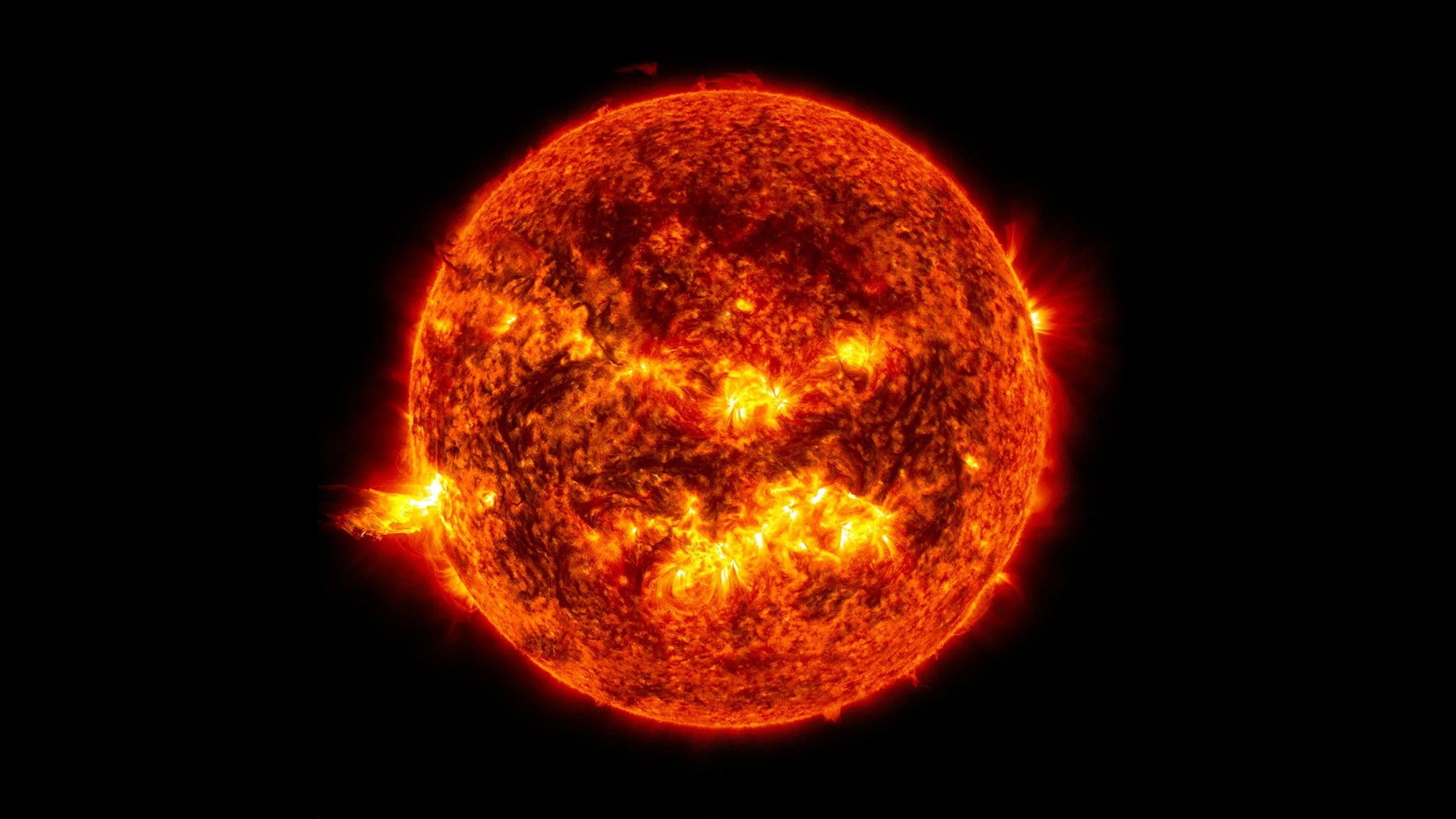
Gravitational lensing occurs when things with mass create ripples and dents in the fabric of spacetime, and light has to follow along those lines, which sometimes create a magnifying glass effect. This both sounds and looks like something wild from science fiction, but it’s actually a very important tool in astronomy. The James Webb Space Telescope has been in the news a lot recently for just this: watching how light bends around massive galaxy clusters in space, revealing fainter, further away old galaxies behind them.
Now, Slava Turyshev, a scientist at NASA’s Jet Propulsion Lab, is trying to harness one of these gravitational lenses closer to home, using our sun. In a new paper posted to the pre-print server arXiv, Turyshev computes all the detailed math and physics needed to show that it is actually possible to harness our sun’s gravity in this way, with some pretty neat uses. A so-called “solar gravitational lens” (SGL) could help us beam light messages into the stars for interstellar communication or investigate the surfaces of distant exoplanets.
“By harnessing the gravitational lensing effect of our star, astronomy would experience a revolutionary leap in observing capability,” says Nick Tusay, a Penn State astronomer not involved in the new work. “Light works both ways, so it could also boost our transmitting capability as well, if we had anyone out there to communicate with.”
When it comes to telescopes here on Earth, bigger is definitely better. To collect enough light to spot really faint far away objects, you need a huge mirror or lens to focus the light—but we can really only build them so big. This is where the SGL comes in, as an alternative to building bigger telescopes, instead relying on spacetime bent by the sun’s gravity to do the focusing for us.
“Using the SGL removes the need to build larger telescopes and instead raises the problem of how to get a telescope out to the focal distance of the Sun (and how to keep it there),” explains Macy Huston, a Berkeley astronomer not involved in the new research. “And there’s a lot of work ongoing to try to solve this,” they add.
Turyshev is actively working on a mission design to send a one-meter telescope (less than half the size of the famous Hubble) out to the focus of the sun’s gravitational well. It’s quite a trek—this focal point is located about 650 AU out from our star, almost five times out from humanity’s current distance record holder, Voyager 1. To get out to such a huge distance in less than a lifetime, the team is relying on cutting-edge solar sail technology to move faster than ever before.
Currently, the James Webb Space Telescope is investigating the atmospheres of planets around other stars, and the future Habitable Worlds Observatory in the 2040s will hopefully be able to see enough detail in exoplanetary atmospheres to find hints of life. Turyshev’s mission would be the next big step towards confirming life on other worlds, hopefully launching around 2035. Once JWST and HWO identify possibly interesting worlds, the SGL telescope will then actually map the surface of an exoplanet in detail. Turyshev claims it would be able to see a planet blown up to 700 by 700 pixels—a huge improvement on direct imaging’s current 2 or 3 pixels. “If there is a swamp on that exoplanet, emitting methane, we’ll know that’s what is positioned on this continent on this island, for example,” he explains.
Looking further into the sci-fi future, this same SGL technology could be used not only “as a telescope we could use from the solar system to view other planetary systems in great detail” but also as an “interstellar communication network (for intentional communications),” says Huston. A laser positioned at the sun’s gravitational focus could send messages to other stars without losing as much signal as our current Earth-bound beacon tech.
“If we were to ever become an interstellar civilization, this [SGL] could potentially be the most effective means of communication between star systems,” says Tusay. Our radio transmissions, leaking out of Earth’s atmosphere since the early 1900s, rapidly become fainter the further away from our planet. Turyshev’s mathematical calculations show that signals sent from the SGL could be easily noticed at the distances of nearby stars, even when accounting for the noisy background of the real world. Transmission via the SGL is “not prohibited, it’s really encouraged by physics,” says Turyshev.
This tech wouldn’t solve all our interstellar roadblocks, though. We might be able to send messages, but we still don’t have a way of sending ourselves out amongst the stars to travel. There’d also be a huge delay in our galactic calls—more like sending a cross-country letter by horseback than FaceTiming with your friends. “Light still has a maximum speed,” reminds Tusay. As a result, sending a message to a star four light-years away would take four years to get there, and another four for the response to reach us. Still, the solar gravitational lens is one big step towards making our science fiction futures a reality.
